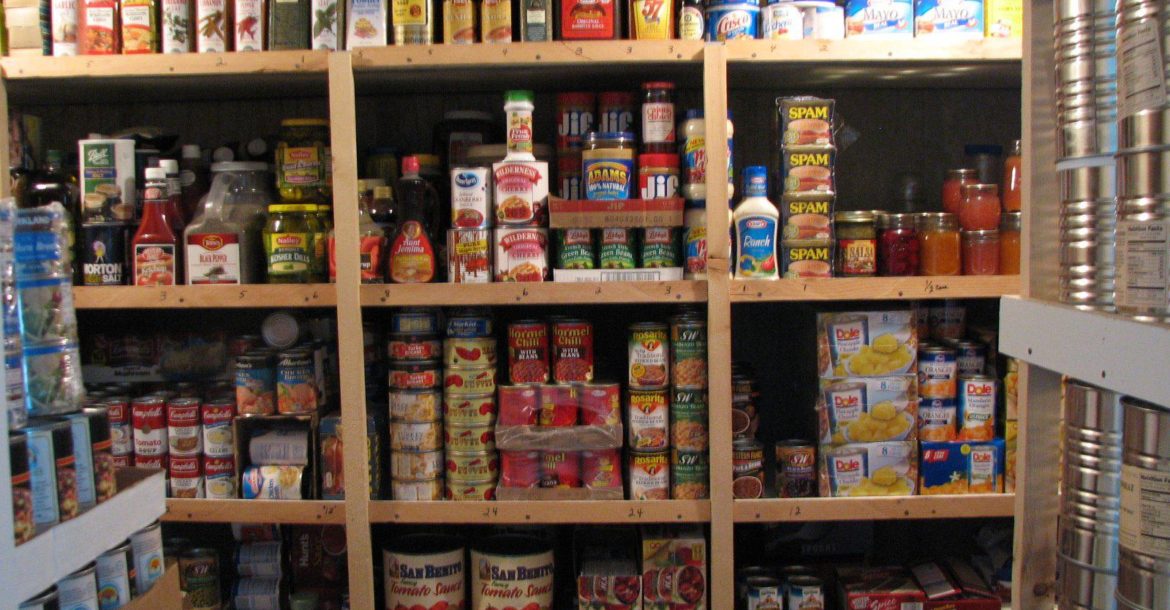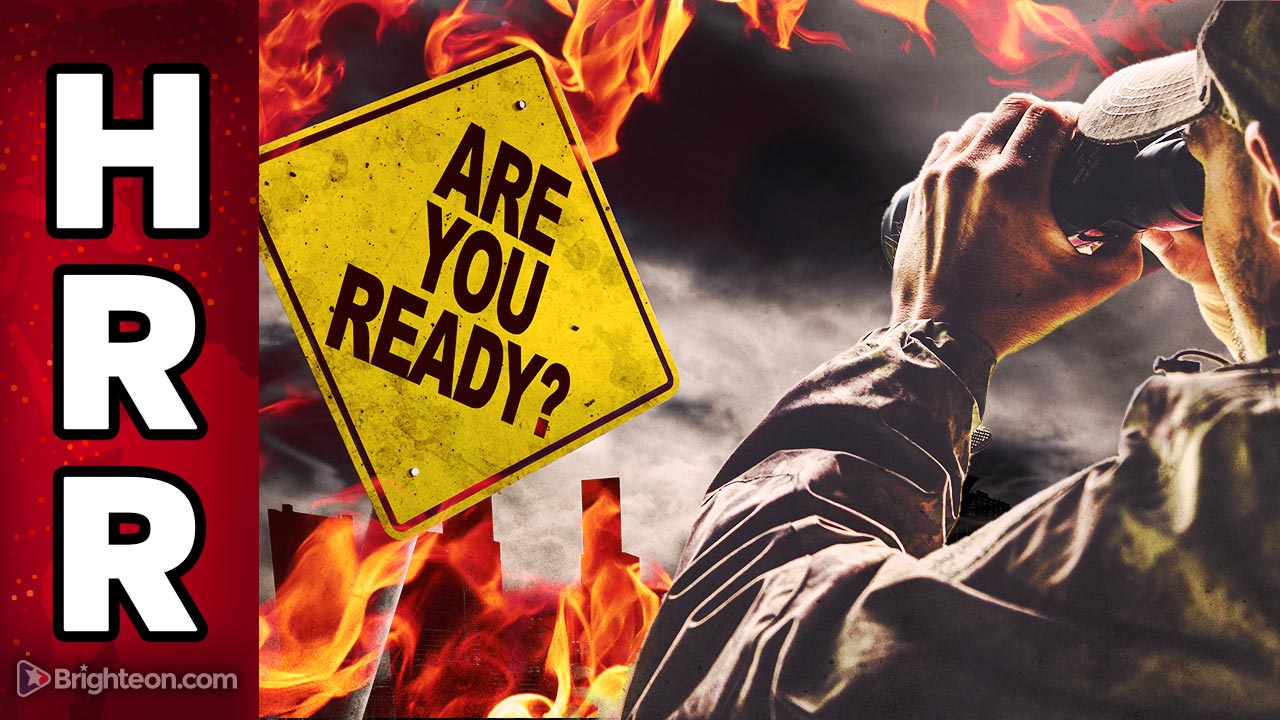Water, gardening, community and more: 11 Important tips for preppers
09/20/2022 / By Zoey Sky

Preppers can’t rest easy without preparing for different survival scenarios like a natural disaster, a long-term power outage or even something rather mundane but stressful like sudden unemployment.
The tips below should help improve your chances of surviving SHTF events. (h/t to FoodStorageMoms.com)
Plan before SHTF
Before you buy any gear or supplies, make a plan. What are you preparing for? Is it food scarcity? A long-term power outage? What about natural disasters or man-made disasters?
Once you decide which common scenarios to prepare for, work on your emergency preparedness plan next. This can help relieve some of the stress and fear that even seasoned preppers may experience during a survival scenario.
Choose a safe evacuation route, then make sure everyone in your family knows where to go and what to do. You should have a backup plan and escape route in mind if your first plan doesn’t work out. You also need to consider any special needs for the elderly, children or pets.
When planning your SHTF to-do list, don’t forget to include at least two or three ways to prepare your meals so you can still cook even if the power is out.
Invest in a quality water filter system
Clean water is essential for your survival. You need water for drinking, cooking, hygiene, cleaning and other tasks if you’re bugging in, and especially if you have to bug out.
Before SHTF, make the necessary preparations so you have access to clean water even if the power goes out or your other water sources are contaminated. You can do this by investing in a good water filter.
Since there are different water filters on the market, do your research and find one that suits your prepping needs.
Learn how to start a home garden
Gardening will bring any prepper one step closer to self-sufficiency, even if disaster doesn’t strike.
If you’re a newbie gardener, start small by planting some herbs or vegetables in pots on your balcony or kitchen windowsill.
Once you learn from your mistakes and get used to growing different herbs or veggies, slowly expand your garden by planting more crops. A home garden will provide you with fresh, healthy food free from harmful pesticides.
If you have excess herbs, fruits and vegetables, you can preserve your harvest and stockpile food for your survival pantry. You can also sell home canned produce for extra money.
Stock up on food and water
Before SHTF, you should learn how to properly stock up on food and water so your family has access to food when you can’t go to stores during an emergency.
If you’re worried about your budget, start by stocking up on at least three days’ worth of non-perishable food and drinking water.
Once you are familiar with proper food and water storage techniques, aim to have at least one week or a month’s supply of food and water. Make sure to rotate or use up items and replace your supplies as needed.
You will also need an emergency toilet and an emergency washing machine if you’re planning for some long-term survival scenarios.
Lastly, stock up on the following essential hygiene supplies:
Personal hygiene:
- Baby wipes
- Deodorant
- Disposable diapers (for babies or adults)
- Feminine products
- Hand sanitizer
- Shampoo
- Soap
- Toilet paper
- Toothbrushes, toothpaste, and dental floss
Cleaning supplies:
- Dishwashing liquid
- Disinfectants
- Disposable gloves
- Garbage bags
- Laundry detergent
Don’t store all emergency supplies in one location
Once you set up your survival stockpile, look for a safe location for an emergency survival cache so you don’t have to store all your emergency supplies in one location. This ensures that if you have to bug out or if the main stockpile is suddenly inaccessible, you can resupply your cache.
You should also prepare a survival bag or kit for your car and for work so you can get home safely if SHTF while you’re not at home.
Prepare bug-out bags for the whole family so you all have the supplies you need to survive as you head to your bug-out location.
Test all equipment and gear
Don’t make the mistake of buying and forgetting gear and supplies in bags or storage rooms. Learn how to use all items in your first aid kit and bug-out bag so you don’t waste time during an emergency.
This also helps prevents accidents, especially when dealing with medical emergencies. (Related: Prepping basics: A 10-item checklist for beginner preppers.)
You should also learn how to use and maintain things around your homestead like your water filter system, various woodworking tools, gardening tools, canning equipment or fire extinguishers.
Teach your whole family so they can understand both the “how” and the “why” when they need to use things from a first aid kit or their survival kits and bug-out bags.
Teach your family how to prep
No man is an island, especially when it comes to prepping. While one prepper can help their family when SHTF, your job will be easier if you also teach your whole family to prep.
Remember that your family is your biggest asset when it comes to survival.
They can help you with supplies and manpower, and they’ll also be your source of emotional support during stressful times.
Involve loved ones who are old enough in your emergency preparedness plans. Teach them how to use different tools and survival skills so you can help each other stay safe when SHTF.
Work on your physical fitness
If you’re not in good physical condition, you may struggle with the strenuous tasks that may be required during an emergency.
Before SHTF, get in shape and boost your overall health with strength training and cardiovascular exercises. Exercising will give you the strength and endurance you need to survive, and it will also help improve your mental state and give you the confidence you need to get through stressful scenarios.
Entertainment should also be a part of your preps
Toys and board games might seem unimportant, but having things that can entertain can improve your mental and emotional health when things are difficult or scary, especially if you are bugging in with young children.
Here are some things to stock up on so you can stay entertained after SHTF:
For young kids:
- Children’s books
- Coloring books
- Frisbee
- Games
- Kites
- Music
- Pen and paper for drawing/doodling
- Skipping rope
For teenagers and adults:
- Badminton set
- Board games (e.g. backgammon, chess, or survival board games)
- Deck of cards, with dice, pencils and a notepad for keeping score
- Fiction and non-fiction books
- Puzzles
- Throwing darts and a dartboard
Get involved in your community
As a prepper, you need to be involved in your community. If you prefer to keep all your preps a secret, at least get to know your neighbors so you can all help each other during an emergency situation.
If you’re not sure where to start, ask around if there is a local preparedness group.
You can also look for volunteer opportunities in the area. Giving back to your community helps build stronger relationships and makes your community stronger as a whole.
Learning to be self-reliant is a crucial part of your prepping journey. But self-reliance also involves doing your research and learning skills that will be very helpful when SHTF.
It’s impossible to learn all the skills that you may need in a survival scenario, but with the combined resources of people in your community, you can figure out which ones you need the most and learn them before SHTF.
Have more than one mode of communication
When SHTF, you may not be able to rely on your cell phone or landline to communicate. This is why you need at least two or three ways to communicate with your family and loved ones.
Aside from your smartphone, consider getting a two-way radio, satellite phone or a CB and ham radio. Make sure you also train and get the necessary license required for certain communication tools.
Preparing for survival situations takes a lot of planning and hard work, but it’s worth it if you want to provide for yourself and your loved ones when SHTF.
Watch the video below to know more about 11 herbs and vegetables you can grow at home.
This video is from the Backyard Farming channel on Brighteon.com.
More related stories:
20 Wilderness survival tips that might save your life after SHTF.
Prepare before SHTF by learning how to manage first aid emergencies in austere environments.
Budget prepping: Ways to make your food budget last longer.
Sources include:
Submit a correction >>
Tagged Under:
clean water, emergency food, emergency preparedness, emergency supplies, food stockpile, Gear, homesteading, preparedness, prepper, prepper fitness, prepping, prepping tips, survival, survival food, survival gear, Survival Tips, survivalist, tips
This article may contain statements that reflect the opinion of the author
RECENT NEWS & ARTICLES
COPYRIGHT © 2018 SURVIVALGEAR.NEWS
All content posted on this site is protected under Free Speech. SurvivalGear.news is not responsible for content written by contributing authors. The information on this site is provided for educational and entertainment purposes only. It is not intended as a substitute for professional advice of any kind. SurvivalGear.news assumes no responsibility for the use or misuse of this material. All trademarks, registered trademarks and service marks mentioned on this site are the property of their respective owners.




















